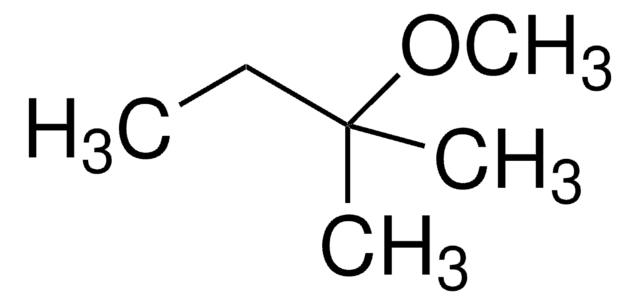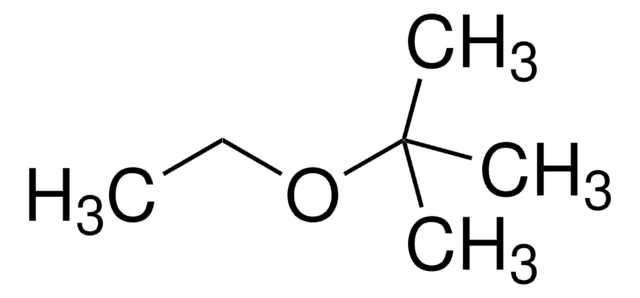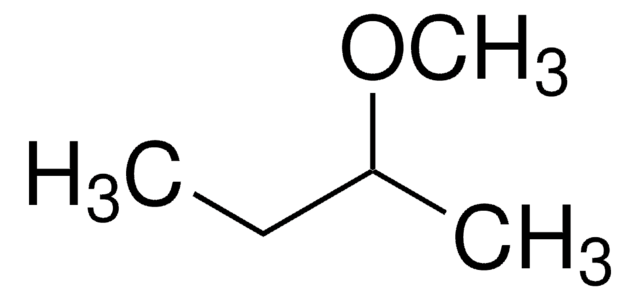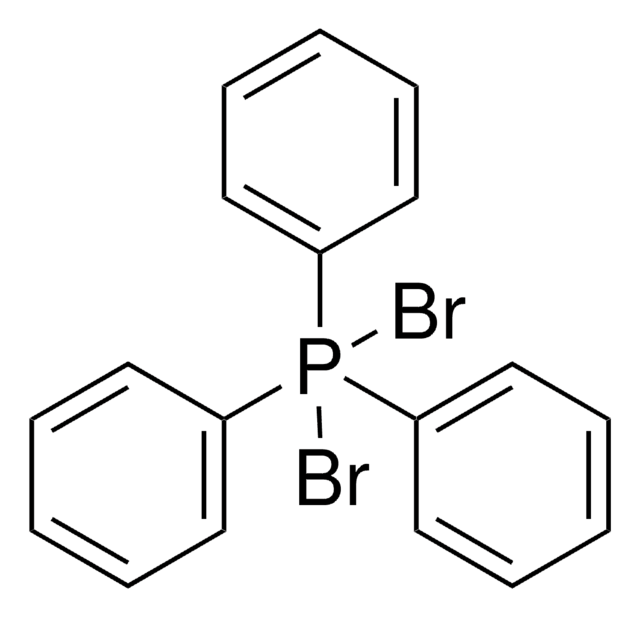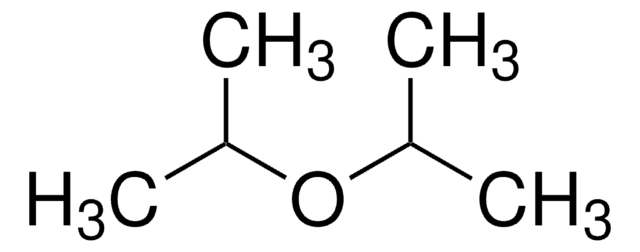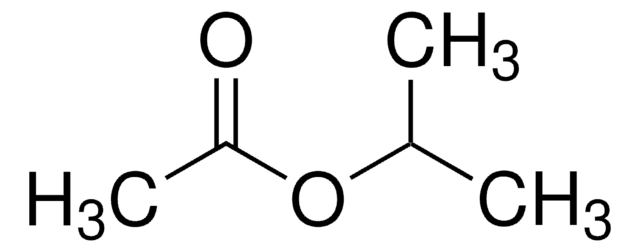742619
tert-Amyl methyl ether
produced by INEOS Oligomers, ≥99.0% (GC)
Synonym(s):
METHOXYPENTANE™, 1,1-Dimethylpropyl methyl ether, Methyl 2-methyl-2-butyl ether, Methyl tert-pentyl ether, TAME
About This Item
Recommended Products
Assay
≥99.0% (GC)
form
liquid
impurities
≤0.01% benzene
≤0.02% water
≤0.50% sum of C5-hydrocarbons
≤0.50% sum of C7-ethers
≤0.60% tert-amyl alcohol
refractive index
n20/D 1.389 (lit.)
n20/D 1.3896
bp
85-86 °C (lit.)
density
0.76-0.78 g/mL at 25 °C (lit.)
functional group
ether
SMILES string
CCC(C)(C)OC
InChI
1S/C6H14O/c1-5-6(2,3)7-4/h5H2,1-4H3
InChI key
HVZJRWJGKQPSFL-UHFFFAOYSA-N
Looking for similar products? Visit Product Comparison Guide
Application
- Identification of environmental hazards of gasoline oxygenate tert-amyl methyl ether (TAME).: This study evaluates the environmental risks associated with the use of tert-Amyl methyl ether (TAME) as a gasoline oxygenate. The research highlights potential hazards to environmental and human health, underscoring the need for careful assessment and regulation of TAME use in fuels. (Huttunen et al., 1997).
Legal Information
Signal Word
Danger
Hazard Statements
Precautionary Statements
Hazard Classifications
Acute Tox. 4 Oral - Flam. Liq. 2 - STOT SE 3
Target Organs
Central nervous system
Storage Class Code
3 - Flammable liquids
WGK
WGK 3
Flash Point(F)
19.4 °F - closed cup
Flash Point(C)
-7 °C - closed cup
Choose from one of the most recent versions:
Already Own This Product?
Find documentation for the products that you have recently purchased in the Document Library.
Customers Also Viewed
Our team of scientists has experience in all areas of research including Life Science, Material Science, Chemical Synthesis, Chromatography, Analytical and many others.
Contact Technical Service